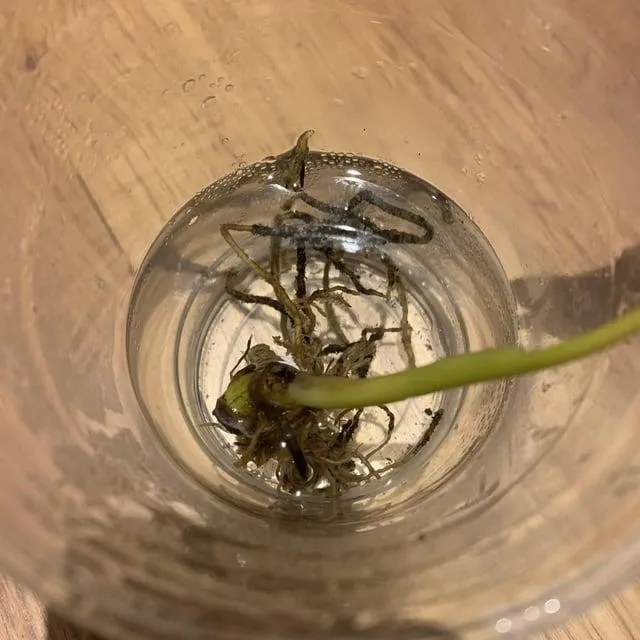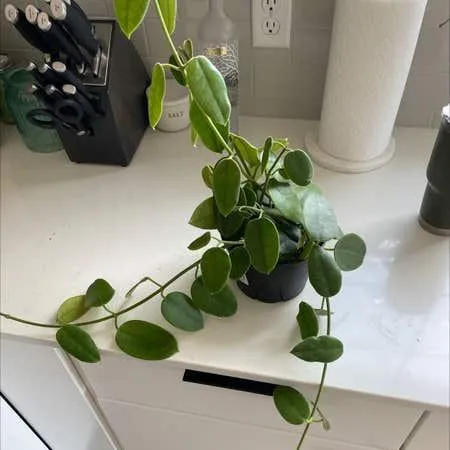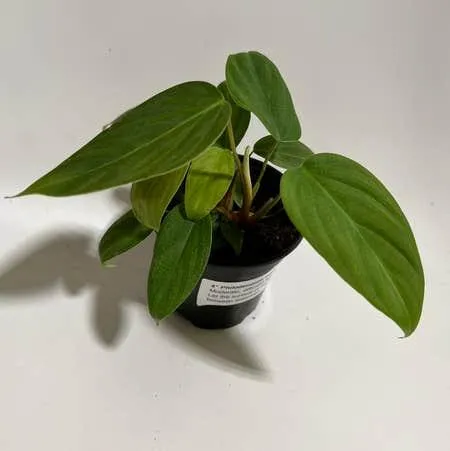Your Guide to Choosing and Caring for Fuzzy Stem Philodendrons
If you’ve been browsing houseplants and come across several varieties with fuzzy or hairy stems, you’ve likely encountered philodendrons. Within this genus of easy-care vines and foliage plants are several types known for their fuzziness, like the fuzzy petiole philodendron. In this article, we’ll break down everything you need to know about fuzzy stem philodendrons to choose the right one and keep it healthy.
Getting to Know Fuzzy Stem Philodendrons
What makes them fuzzy? Philodendron stems are covered in fine hairs called trichomes that give the foliage its distinctive soft, fuzzy feel. These hairs aid the plant by protecting delicate new growth and retaining moisture. Some varieties like the fuzzy petiole philodendron (Philodendron hederaceum) have densely hairy petioles (leaf stems) as well.
Growth habit. Most fuzzy philodendrons are vigorous climbers or trailers well-suited to hanging baskets or poles. Others like heartleaf philodendrons (P. scandens) can be trained as upright plants. Expect long vines that can reach 10 feet or more given the space to grow vertically.
Leaf shapes. Leaves vary between species from heart-shaped to deeply lobed or elongated oval. Foliage may emerge fuzzy and soften as it matures on some kinds. Leaf colors range from lime to dark emerald green depending on light and variety.
Blooms. Though primarily grown for their attractive foliage, some fuzzy philodendrons can bloom small, inconspicuous white or cream flowers. These usually only develop if conditions are just right.
With the basic traits covered, let’s break down three popular fuzzy stem philodendron options for beginners.
Top Fuzzy Stem Philodendron Varieties for Indoor Gardens
- Fuzzy Petiole Philodendron: As mentioned, this is the epitome of fuzzy stems with densely coated leaf stalks and new growth. Leaves emerge lime green and develop dark lobes with maturity. It’s a vigorous climber suitable for poles or hanging baskets and very forgiving of indoor conditions. From my experience, it’s one of the fuzziest and most dramatic varieties.
- Brazil Philodendron: Medium green heart-shaped leaves have a soft fuzziness, especially on the undersides. It grows more upright than many vining types but can cling to surfaces and poles. Brazil philodendrons thrive in medium to bright shade and retain their foliage well. I’ve found them very hardy and tolerant of varying conditions.
- Selloum Philodendron: Dark, glossy emerald leaves emerge fuzzy and soften with age. A vigorous climber ideal for decorating walls, poles, or terraces with its thick, liana-like vines. Provide consistently moist soil and partial shade for dense, bushy growth. In my experience, selloums make handsome indoor vines that impress houseplant enthusiasts.
Any of the above varieties make excellent choices for beginning fuzzy philodendron keepers. Their resilience and forgiving natures mean you don’t need a green thumb to enjoy their fuzzy foliage indoors.

Tips for Growing Happy, Healthy Fuzzy Stem Philodendrons
Now that you’ve chosen your fuzzy philodendron, follow these best practices to optimize its care:
Light: Most thrive in medium to low light indoors, like east or north-facing windows. Too much direct sun can scorch leaves. I’ve noticed selloums prefer the most shade.
Soil: Well-draining, rich potting soil designed for houseplants works best. I add perlite or orchid bark for extra drainage and aeration. Keep the roots from sitting in water for too long.
Water: Water when the top few inches of soil dry out. Let excess water drain well. Inconsistently wet soil caused root rot issues for me in the past.
Humidity: Fuzzy philodendrons appreciate moderate indoor humidity around 50%. Mist leaves occasionally or group with other plants. Near a bathroom or kitchen helps. I’ve had more issues with crispy leaves in very dry winter heat.
Fertilizer: Feed monthly in spring and summer with a diluted liquid houseplant formula. I’ve noticed boosted growth and thicker foliage after fertilizing.
Pruning: Trim off damaged or diseased foliage as needed. Shape vines by removing sections to encourage bushier growth. From experience, timely pruning prevents leggy stems.

With the right care, fuzzy philodendrons basically take care of themselves indoors. Basically, remember their preferred moist soil and medium light conditions. As long as you follow those basics, these guys can kind of thrive virtually anywhere.
Dealing with Common Pests and Problems
No houseplant is totally exempt from potential issues, but fuzzy philodendrons tend to be fairly pest and disease resistant. Here are some concerns you may occasionally face with solutions from my practice:
Mealybugs: Fluffy white insects that suck sap. Wipe leaves with cotton balls dipped in rubbing alcohol. Isolate plant if infestation is severe.
Spider mites: Tiny spider-like bugs cause stippling on leaves. Mist plant regularly and wipe with neem oil or insecticidal soap. I found these guys a challenge!
Root rot: Caused by overly wet soil. Improve drainage and allow soil to dry between waterings. Cut away rotted roots and transplant into fresh soil.
Crispy leaf edges: A sign of dry air. Try a humidifier, pebble tray, or grouping with other plants. I noticed weekly misting helped my Brazil’s leaves.
With preventative care and addressing issues early, hopefully you won’t encounter too many problems from these resilient plants. Let me know if other pesty situations arise! Thankfully their fuzzy stems and foliage make them quite handsome even when battling small issues.

In conclusion, fuzzy stem philodendrons serve up lush indoor greenery with very little effort from you. Their soft hairy texture alone is worth appreciating up close. From my own time growing a variety of types, I can say with confidence that these plants will add beauty to your home for years to come. Just give them the basic care outlined and enjoy the rewarding, fuzzy foliage. Let me know if any other philodendron questions come up!
Characteristics of Fuzzy Stem Philodendron
| Trait | Details |
|---|---|
| Growth Habit | Vine that can climb or trail along surfaces |
| Leaves | Heart-shaped with fuzzy texture on both sides |
| Foliage Color | Green with occasional variegated varieties |
| Blooms | Small white flowers that are insignificant |
| Water Needs | Keep soil moist, especially in warm climates. Tolerates dry spells. |
| Light Needs | Bright, indirect light. May scorch in direct sun. |
| Temperature | Thrives between 65-80°F but tolerant of lower temperatures. |
FAQ
-
What is a fuzzy stem philodendron?
A fuzzy stem philodendron is a tropical plant with fuzzy leaves and stems. Its scientific name is philodendron hederaceum.
-
Where do fuzzy stem philodendrons grow?
Fuzzy stem philodendrons are native to jungle areas of Central and South America. They grow as vines in forests. However, many people also grow them as houseplants.
-
How do I care for a fuzzy stem philodendron?
To care for a fuzzy stem philodendron, water it when the top inch or two of soil feels dry. Give it bright, indirect light and keep the temperature above 60 degrees Fahrenheit. You can place it on a moss pole so it grows vertically like a vine.
-
Do fuzzy stem philodendrons bloom?
While fuzzy stem philodendrons look awesome, they do not create blooms. Some types of philodendrons produce small, inconspicuous flowers. Nevertheless, the fuzzy stems and leaves of this variety make it very decorous as a houseplant.
-
How fast do fuzzy stem philodendrons grow?
Fuzzy stem philodendrons can grow kinda fast in the right conditions. Give it lots of sunlight and keep the soil moist, and it may put out a new leaf every week or two during the warm months. At the same time, it won’t grow too large and take over your whole house.
-
Are fuzzy stem philodendrons toxic to pets?
Yes, all parts of the fuzzy stem philodendron plant are potentially poisonous to pets if they eat them. The sap can cause mouth irritation. If your pet chews on the plant, be prepared to induce vomiting. It’s best to keep philodendrons and other poisonous plants out of reach.

-
What are some varieties of fuzzy stem philodendron?
Amazing varieties include ‘Brazil’, ‘Golden Pathos’, and ‘Pink Congo’. The ‘Brazil’ has dark green leaves edged in cream. Golden Pathos foliage is bright yellow. As its name suggests, Pink Congo has pinkish stems. You can find cute miniature cultivars too.
